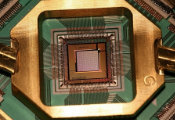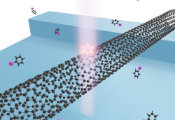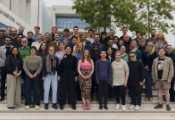Metasurface-Based Compact Optical Device for Advanced Beam Multiplexing
August 26, 2025 -- Researchers at the University of Tokyo have developed a breakthrough multi-input, multi-output optical vector beam converter that simultaneously manipulates both the polarization and spatial properties of light beams using metasurface technology. This compact device represents the first demonstration to simultaneously convert multiple input optical beams into orthogonal vectorial modes and output them in a multiplexed state.
The device combines an optical metasurface—composed of nanostructures smaller than the wavelength of light—with a gold reflective film to achieve unprecedented functionality in a remarkably small form factor. Measuring approximately 0.2 mm² in area and 0.6 mm in thickness, the converter addresses significant limitations in current optical systems.
Conventionally, multiplexing or demultiplexing of multiple spatial modes relies on complex combinations of bulky optical components, preventing system miniaturization and increasing costs. Additionally, polarization mode separation requires additional polarization beam splitters, further complicating optical architectures. The new metasurface-based device overcomes these limitations by simultaneously converting and multiplexing both spatial and polarization modes of multiple optical beams within a single, compact device.
The device offers compelling advantages through its two-dimensional scalability to support highly parallelized optical beams and its capability to be integrated with light-emitting and light-receiving components. By enabling simultaneous manipulation of multiple optical properties in an ultra-compact device, this research paves the way for next-generation optical systems with enhanced performance, reduced complexity, and lower manufacturing costs.
The work opens new possibilities for diverse applications, including large-capacity space-division multiplexed optical fiber communication, free-space optical communication, optical computing, and polarization-dependent holographic imaging.




































